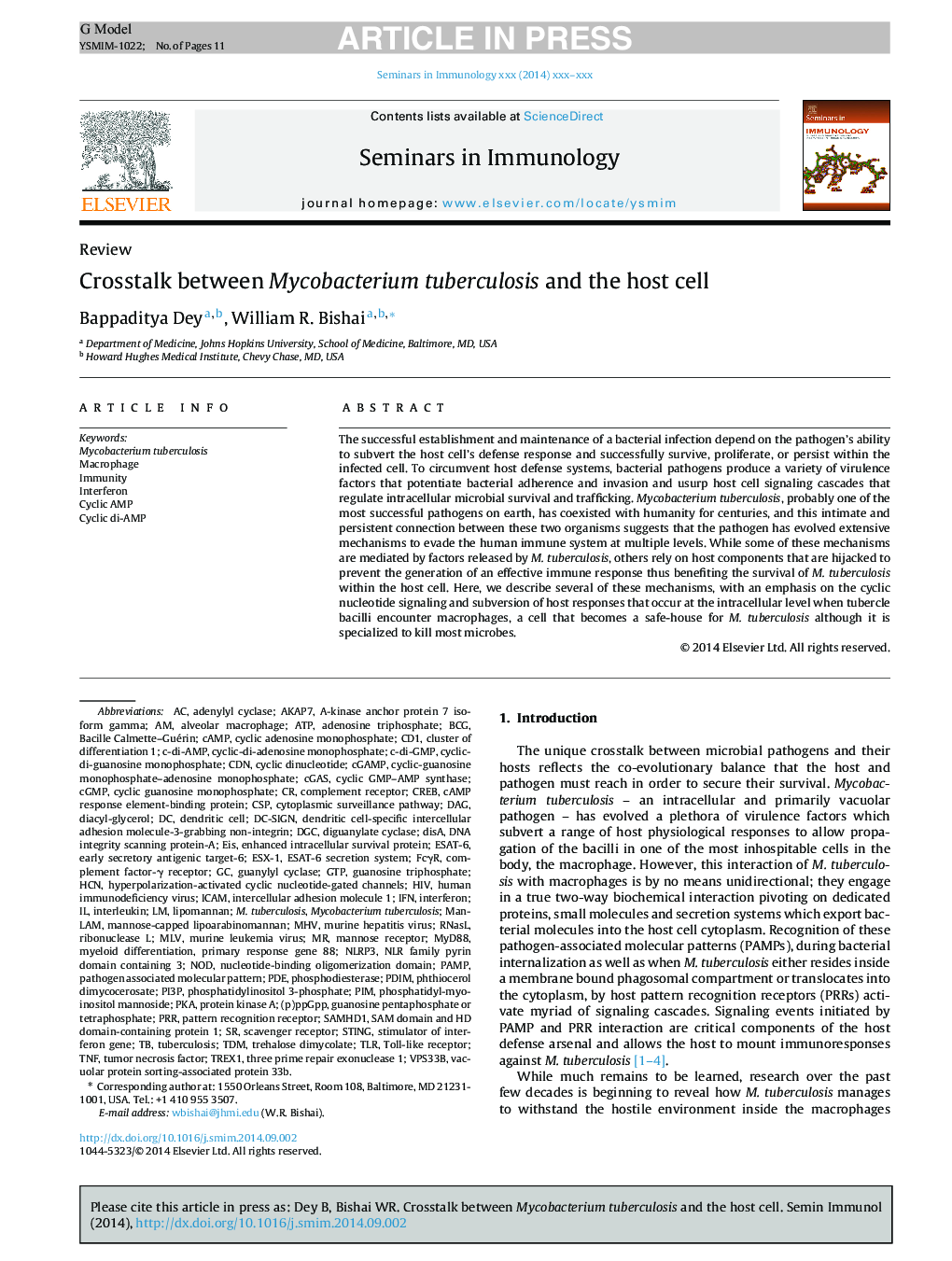| Article ID | Journal | Published Year | Pages | File Type |
|---|---|---|---|---|
| 6125885 | Seminars in Immunology | 2014 | 11 Pages |
Abstract
The successful establishment and maintenance of a bacterial infection depend on the pathogen's ability to subvert the host cell's defense response and successfully survive, proliferate, or persist within the infected cell. To circumvent host defense systems, bacterial pathogens produce a variety of virulence factors that potentiate bacterial adherence and invasion and usurp host cell signaling cascades that regulate intracellular microbial survival and trafficking. Mycobacterium tuberculosis, probably one of the most successful pathogens on earth, has coexisted with humanity for centuries, and this intimate and persistent connection between these two organisms suggests that the pathogen has evolved extensive mechanisms to evade the human immune system at multiple levels. While some of these mechanisms are mediated by factors released by M. tuberculosis, others rely on host components that are hijacked to prevent the generation of an effective immune response thus benefiting the survival of M. tuberculosis within the host cell. Here, we describe several of these mechanisms, with an emphasis on the cyclic nucleotide signaling and subversion of host responses that occur at the intracellular level when tubercle bacilli encounter macrophages, a cell that becomes a safe-house for M. tuberculosis although it is specialized to kill most microbes.
Keywords
FcγRPI3PcGAMPVps33bESAT-6c-di-GMPMHVTDMM. tuberculosisCD1SAMHD1DC-SIGNNLRP3CREBICAMPRRTLRPAMPHyperpolarization-activated cyclic nucleotide-gated channelsCyclic di-AMPSAM domain and HD domain-containing protein 1ESX-1Cyclic dinucleotideNLR family pyrin domain containing 3TNFphosphatidyl-myo-inositol mannosideRibonuclease LMLVLipomannanPDIMManLAMTREX1CDNc-di-AMPphthiocerol dimycocerosateCgasBCGMYD88cGMPPDECSPHCNDGCPIMGTPNODpKa(p)ppGppcyclic AMPcAMPAdenosine TriphosphateATPCyclic adenosine monophosphateadenylyl cyclaseinterferonIFNinterleukinBacille Calmette–GuérinDisATuberculosisEISTrehalose dimycolateToll-like receptornucleotide-binding oligomerization domaindiacyl-glyceroldiguanylate cyclaseDAGDendritic celltumor necrosis factorphosphatidylinositol 3-phosphatePhosphodiesteraseMannose-capped lipoarabinomannanMacrophageAlveolar macrophageMycobacterium tuberculosisImmunityIntercellular adhesion molecule 1Dendritic Cell-Specific Intercellular adhesion molecule-3-Grabbing Non-integrincyclic guanosine monophosphateSTINGMurine leukemia virushuman immunodeficiency virusHIVMurine hepatitis viruspathogen associated molecular patterncAMP response element-binding proteinprotein kinase AGuanosine triphosphateguanylyl cyclaseComplement receptorMannose receptorScavenger receptorPRR, Pattern recognition receptor
Related Topics
Life Sciences
Immunology and Microbiology
Immunology
Authors
Bappaditya Dey, William R. Bishai,
